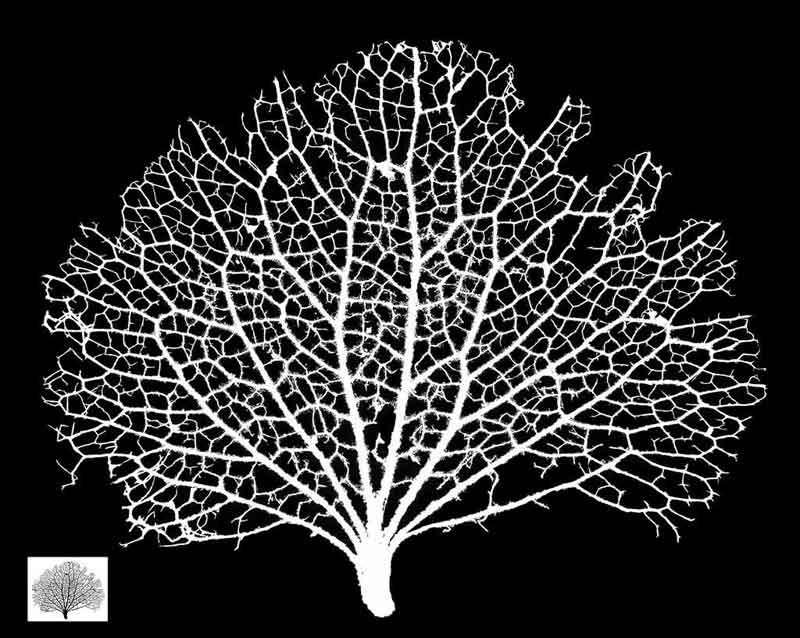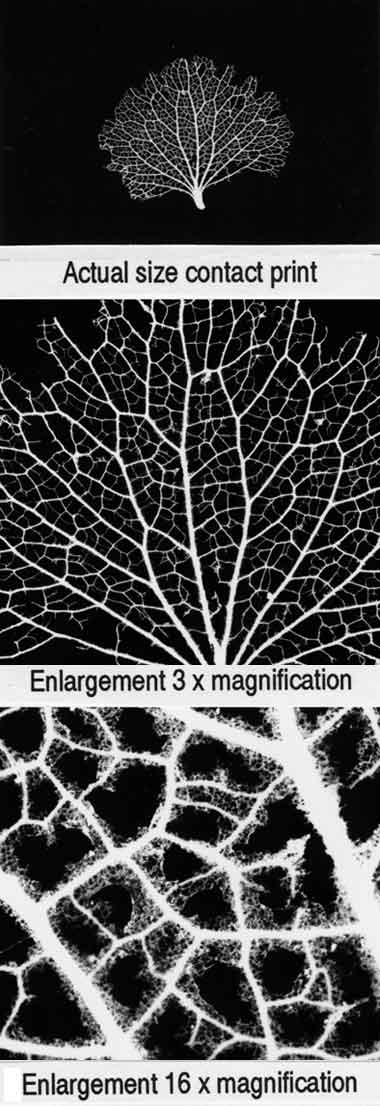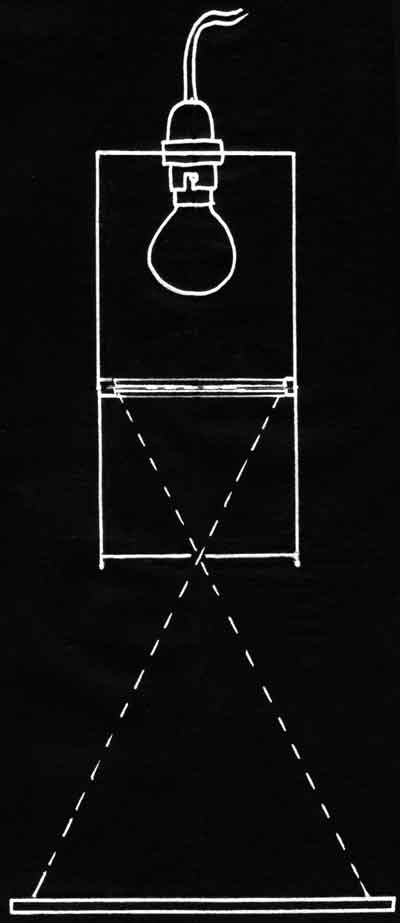Macrogram of a Skeletonised Petal

Actual size of petal shown in inset.
The production of an image on photosensitised emulsion that is larger than the the subject.
This is based on one of the oldest applications of optics to facilitate the observations of microscopic objects . It predates 'photography' and in fact was one of the driving forces behind the development of the photographic process we know today A device called the " Solar Microscope" was used by scientists in the early 19th ctry so called because it used sunlight to project an image of a specimen placed above a lens onto a sheet of paper in a darkened room a copy was made by tracing the image in ink or pencil. When the father of modern day photography Henry Fox Talbot was using such a device he postulated. " but the powers of this pencil fail to express the minutiae of nature in their innumerable details. What artist could have the skill of patience enough to copy them? or granting that they could do so, must it not be at the expense of much more valuable time , which might be more usefully employed?" " Contemplating the beautiful picture which the solar microscope produces the thought struck me, whether it might be possible to cause that image to impress itself upon the paper, and thus to let Nature substitute her own inimitable pencil for the imperfect, tedious, and almost hopeless attempt of copying a subject so intricate," When Fox Talbot (in the early 1830's) had achieved a sufficient increase in the sensitivity of his 'sensitised paper' to light he used it under the solar microscope to capture the image and he had no doubt " that a analogous process would succeed in copying the objects of external nature (using a camera obscura) although indeed they are much less illuminated" Examples of the images he produced using a Solar Microscope were part of Fox Talbot's submission to the Royal Society in a publication called the " Pencil of Nature" |
 |
This process is best carried out in the controlled environment of a photographic darkroom however a blacked out room or darkroom tent can be equally successful If you have a conventional enlarger available you should have few problems, glass carriers should be used to hold the specimens and care must be taken to stop 'bits' falling into the enlarger.
You could even construct a 'pinhole enlarger from a couple of large metal coffee tins as shown in the sketch Ref Pinhole camera notes and the minimum hole size will be dependent upon the hole to base board distance which will limit the magnification that can be achieved. |
|
These notes are a guide based on our practice you should ensure that you follow the recommended Health and Safety practice for your organisation.
Ref letters of HFox Talbot F.R.S.
